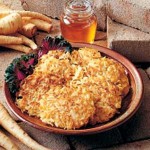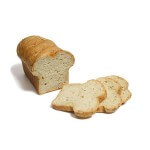Kinds Of Fruits
Learn about the kinds of fruits. A fruit is the vessel for the seed of a plant, and is therefore very important in reproduction. There are certain similarities in all kinds of fruits. The fruit is the end product of fertilization, which occurs when the ovary of a flower on the tree is fertilized. Many fruits are fleshy, which is a part of the mechanism that protects the seed. A fruit is hard to crack and can be bitter tasting when unripe, but may be soft, sugary and attractive in terms of smell when ripe. This is so that animals that serve to release the seeds of the fruits are compelled to eat it.
There are some major kinds of fruits that we know and love, and they can be simple fruits, composite fruits and aggregate fruits.
Simple fruits originate from a single pistil flower. These kinds of fruits can further be categorized as simple dry fruits and simple fleshy fruits. Dry simple fruits have a peculiar form of releasing seeds. They are dehiscent, which means there is a part of the fruit that splits to release the seed when the ripening period is completed. Some fruits are indehiscent, which means the seeds stay encased in their protective shells until natural processes like rotting or digestion by animals and subsequent release through feces are done. Legumes are good examples of dry, dehiscent fruits, including peas, beans and peanuts. Nuts like beech and oak also have this type of fruit.
Most kinds of fruits under the berry genus Vaccinium are simple fleshy fruits. Examples of these are huckleberries, red currants, gooseberries, tomatoes and cranberries and cranberries. Stone fruits like cherries, peaches and apricots are also categorized under simple fleshy fruits.
Aggregate Fruits
Among the kinds of fruits around, aggregate fruits are the most fascinating because the single flower of the plant has numerous pistils, which account for the way seeds are distributed or developed inside the fruit. Pome fruits, including apples, pears and Saskatoon berry are examples.
Multiple fruits
There are some kinds of fruits that have been developed from flower clusters, resulting in the production of several small fruits initially. These fruits coalesce and form one fruit with multiple seeds. The fruit of the pineapple is a good example, and the eyes of the fruit are the individual fruits that molded together to make one fruit.
Accessory fruits
Accessory fruits are the kinds of fruits that deviate from the norm of the ovary creating the fleshy part of the fruit after fertilization. These fruits derive their fleshy parts by the fusing of the receptacles for strawberries and figs, and the calyx for Syzygium jambos. Apples and pears can also be categorized under this group with the fleshy parts coming out of the hypanthium.
Parthenocarpic fruits are kinds of fruits that don’t conform to the norm at all. This is because they have no seeds. The seeds of these fruits are either aborted early in the development with the seed fragments disintegrating into the fleshy tissue, or the plant is a mutant or a genetically modified organism. Many plants are induced to be parthenocarpic because seedless fruits are often prized in the market.






